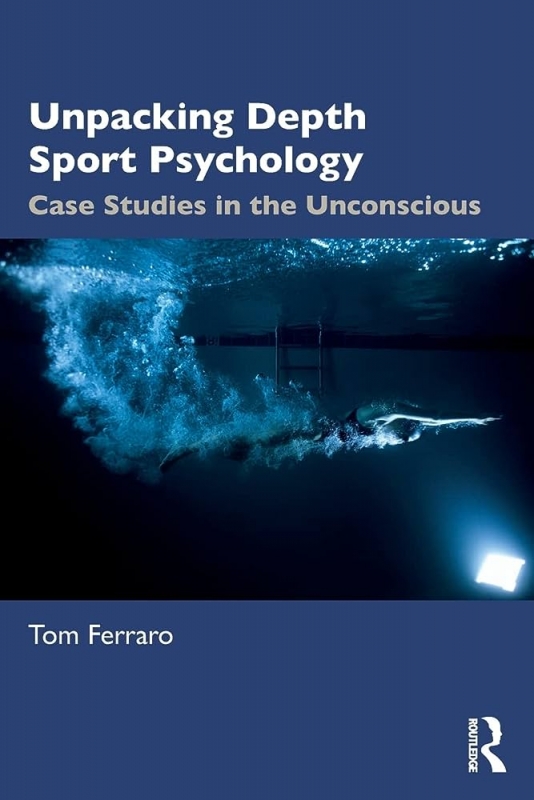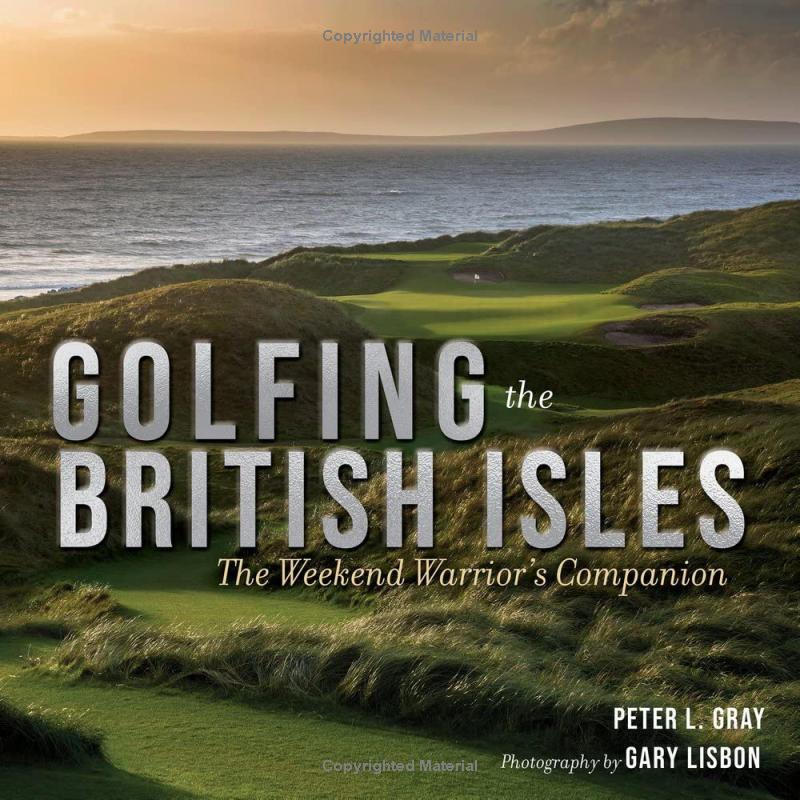Summer Reading: Book Reviews
"Unpacking Depth Sport Psychology"
Golfers who suffer from the yips, have a short fuse on the course or deal with other athletic-related demons, will find "Unpacking Depth Sport Psychology" by Tom Ferraro, M.D. (Routledge, $42 paperback) to be a  helpful resource in uncovering solutions to such issues.
helpful resource in uncovering solutions to such issues.
Dr. Ferraro, a practicing sport psychologist in Williston, NY, has worked with numerous high profile professional athletes as well as amateur athletes seeking to improve their performance on the course, court, field, arena or stadium. A golfer himself, and lover of all sports activities, he presents a number of case studies that will resonate with athletes of any level.
He analyzes "choking" by athletes, why the yips occur and how best to deal with them, and other mind-numbing anxiety before the big match or game as well as avoiding locker-room infighting and turmoil.
While he offers understandable references to many renowned clinical psychoanalysts such as Sigmund Freud, Alfred Adler and Carl Jung, the book focuses on the newer approach of depth sport psychology. He even dismisses Dr. Bob Rotella, a popular sport psychologist, as one who needs to shift from his utilization of cognitive behavioral techniques and acknowledge athletes' unconscious feelings and fears. Dr. Ferarro believes sports psychology must return to Sigmund Freud's principles of unraveling and resolving what lies in an athlete's unconscious state.
The author provides relevant insights and knowledge for coaches, parents, and athletes seeking answers to improve athletic performance from a psychological standpoint. The sports world has recently observed several notable athletes who have withdrawn from competitive play as a result of conflicts, fears, anger, guilt, perfectionism and other psychological defenses.
Dr. Ferraro's book directly addresses how to understand athletes' repressed feelings and the pressures they face. It is timely and a worthy contribution to a widely misunderstood science.
----
"Golfing the British Isles"
If you are like most golfers, following the conclusion of The Open Championship, there is a great yearning to play those celebrated courses hosting the championship. But the time, expense, and challenge in making a  pilgrimage to these most historic and scenic courses could be a deterrent.
pilgrimage to these most historic and scenic courses could be a deterrent.
 pilgrimage to these most historic and scenic courses could be a deterrent.
pilgrimage to these most historic and scenic courses could be a deterrent.
That's where "Golfing the British Isles" by Peter Gray and Gary Lisbon (Triumph Books, $35) is a wonderful new resource. Gray, the author, and Lisbon, the book's photographer, have cobbled together a coffee table size bookblending travel advice, golf history, and architectural landscape overtones, not to mention breathtaking photographs of some of the world's finest golf courses.
Written for the golfer who has never been to Scotland, Ireland, England and Wales, here is the perfect companion to navigate the easiest way to get there, the best and most renown courses to play in each country, and how to enjoy your golf experience while enduring rain, wind and chilly weather.
Gray, himself a mid-handicap golfer, who as an environmental lawyer, loved golf and wanted to explore more about his passion, but had sparse time to devote long stretches of vacation time traveling to golf's homeland. Instead, over the years, he spent many long weekends hopping on a jet aircraft with his golf buddies intent on playing courses with the "Royal" designation as well as famous linksland and parkland courses including Royal County Down, Royal Dornoch, St. Andrews (Old Course), Turnberry, Ballybunion, Sunningdale (Old) and Walton Health.
After what seems like nearly two dozen or more of these trips, he compiled notes, anecdotes, and advice provided by caddies, course managers, and locals he met at neighboring pubs. Gray included all of this in the book as well as introductory chapter quotes from legendary course designers and journalists such as Alistair MacKenzie, C.B. Macdonald, Donald Ross, Bernard Darwin, John Updike and even Pablo Picasso.
Gray spends time walking the reader up, down and across his favorite holes of courses in each region, and the accompanying photographs by Lisbon dramatically portray the beauty, difficulty, and architectural masterpiece of each.
A special part of the book is a question and answer section where Gray offers advice, guidance and knowledge to lessen the anxieties of playing golf in the UK and Ireland. Unfortunately, the book is rather sizable and hefty to pack for that upcoming trip, so take handwritten notes with you.
As a gift to one's favorite golf family member or friend, this book has one caveat -- be ready to see them making plans to visit the British Isles. Better yet, get the book for yourself and make sure that passport is up to date!!
----
"Principles of Golf Architecture"
Recently, the subject of the design of golf courses here in the Met Area as well as throughout the world has received increasing attention. As golf has had a resurgence since the pandemic, new courses are being built and existing ones are undergoing restoration and renovation.
Helping to understand the basics and the intricacies of golf architecture and construction, Mamaroneck and Rye native and award-winning golf architect, Richard Mandell, has authored, "Principles of Golf Architecture"  (T.Eliot Press, $34.95). In doing so, he has woven together dozens of essential topics that art and architectural students spend years to learn including Design Elements, Design Principles, definitions, construction and routing procedures and practices, and historical perspectives.
(T.Eliot Press, $34.95). In doing so, he has woven together dozens of essential topics that art and architectural students spend years to learn including Design Elements, Design Principles, definitions, construction and routing procedures and practices, and historical perspectives.
 (T.Eliot Press, $34.95). In doing so, he has woven together dozens of essential topics that art and architectural students spend years to learn including Design Elements, Design Principles, definitions, construction and routing procedures and practices, and historical perspectives.
(T.Eliot Press, $34.95). In doing so, he has woven together dozens of essential topics that art and architectural students spend years to learn including Design Elements, Design Principles, definitions, construction and routing procedures and practices, and historical perspectives.
The book speaks to a wide audience, from those who work in the golf course design profession to the layman. For the latter, Mandell includes dozens of helpful photos, illustrations, sketches, and drawings, and he describes how this all applies to the process of designing a golf course, and ultimately, how this impacts golfers playing the game.
While attempting to keep his narrative simple and understandable for those new and unfamiliar to these arcane and esoteric subjects, his copy at times tends toward the professorial and methodical. But the traditional and modern disciplines and concepts he is presenting require these comprehensive explanations.
Growing up in the Met Area provided Mandell the opportunity to play on many classic courses designed by legends such as A.W. Tillinghast, Donald Ross, Alister MacKenzie, and Charles Banks, among others, and shaped his distinct golf architecture philosophy and decision to become a golf course designer. The book cites many of the legends' design decisions and styles, but also highlights Mandell-created design principle details such as Chance, Mystery, Quirk, and Randomness, to name a few.
Golfers will discover the meanings and examples of these and more in this thought-provoking and informative book written by a golf architect of stature -- one who has designed over 75 golf courses and is a winner of 31 prestigious golf design awards and accolades.
Mandell does not guarantee that any of these principles -- the established ones or his own --will reward you by reducing a shot or two off your golf score, yet knowing the "What, When, Where, Why and How" of the course might just do that!
----
-By Les Schupak
